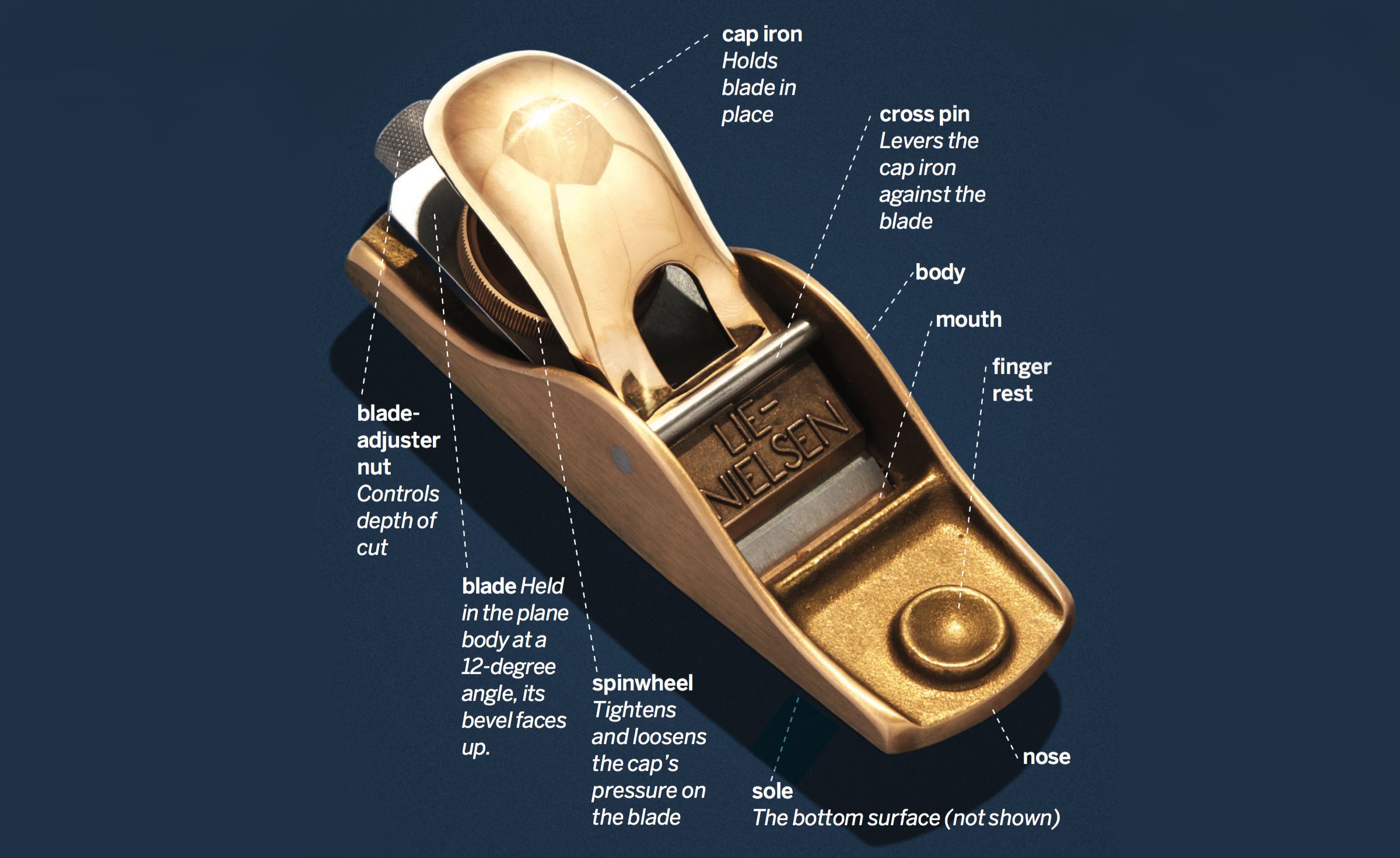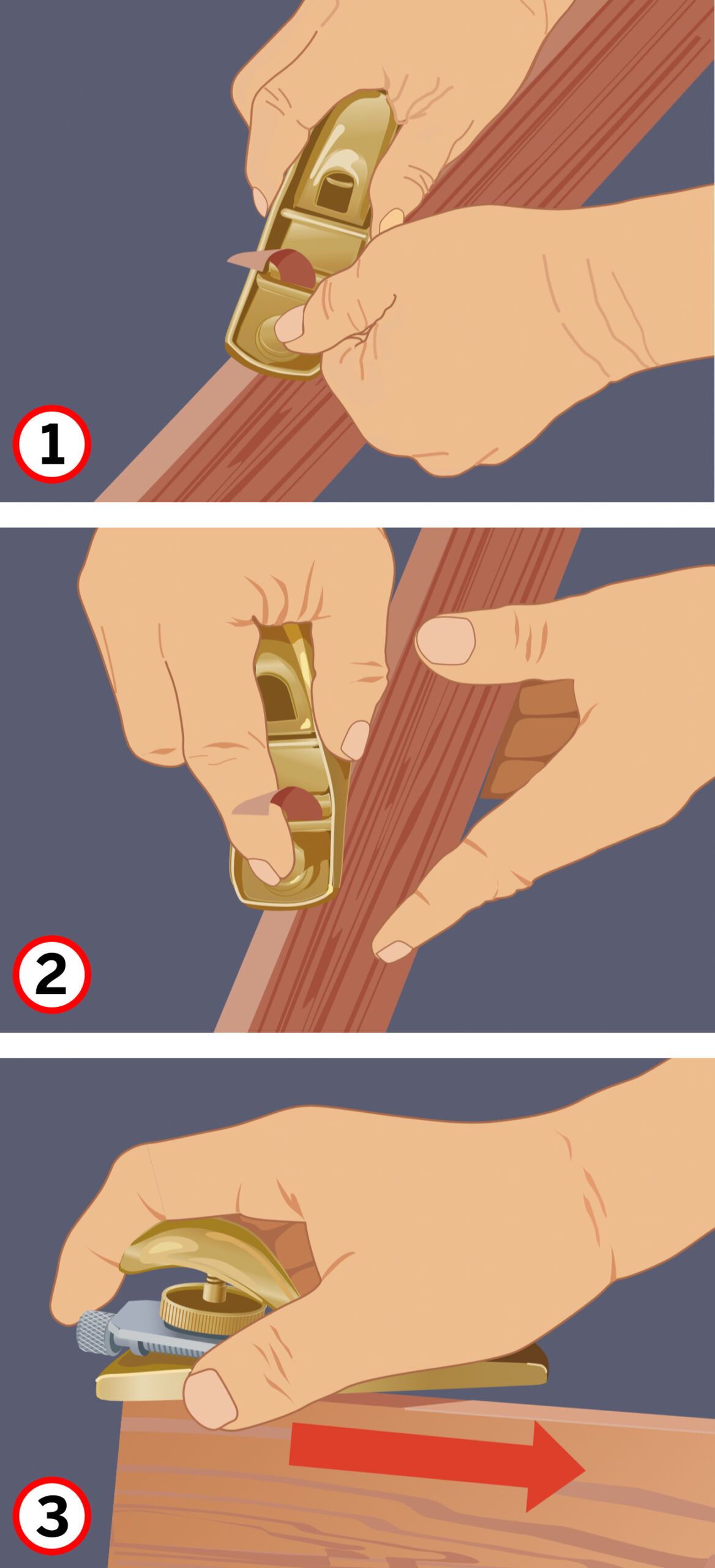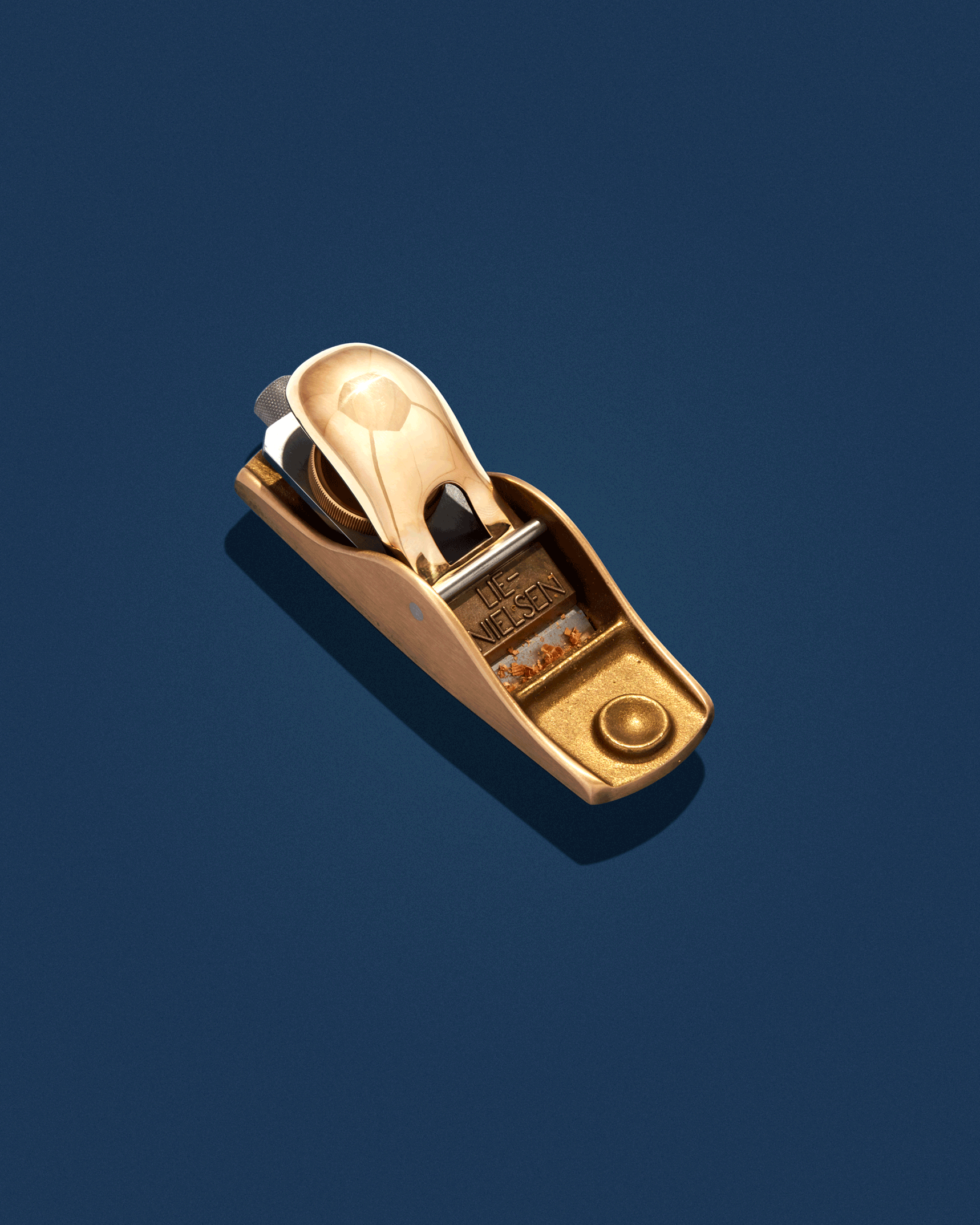This article appeared in the Nov/Dec 2020 issue of This Old House Magazine.
The No. 102 low-angle block plane that made its debut in the 1877 catalog of Stanley Rule & Level Co. was a 5 1/2-inch-long, all-steel tool designed to slice through tough end grain, such as butcher blocks.
All About the No. 102 Low-Angle Block Plane
But carpenters found that the palm-size No. 102 neatly fit in a tool belt, and put it to use trimming cabinet doors, shaving shingles, scribe-fitting baseboards, and fine-tuning miters.

Stanley made its last No. 102 in 1962. Twenty-five years later, in 1987, Lie-Nielsen Toolworks issued an upgraded version with a cap iron and body made of rustproof manganese bronze, a stainless-steel blade-depth adjustment with fine micrometer threads, and a 1⁄8-inch blade—twice as thick as the original—for vibration-free cutting.
The result: a handy, portable plane that makes shavings just .008 to .010 inch thick right out of the box.
How to Adjust it
When the blade gets dull, it has to be taken out, sharpened, then put back in and realigned. To do that:
- Cradle the tool upside down in one hand, nose facing you; give the spinwheel a quarter turn counterclockwise to loosen the cap iron.
- Sighting down the underside, retract the blade into the slit in the bottom by turning the blade-adjuster nut counterclockwise.
- Then turn it clockwise until the blade edge emerges. If the edge isn’t square to the sole, nudge the blade sideways and tighten the cap.
- Clamp a thin strip of wood edge up and run the plane’s right side over it, then the left. If no shaving comes up, loosen the cap, turn the adjuster nut clockwise, and retighten the cap. If only one side makes a shaving, nudge the blade sideways a bit.
- Keep adjusting and testing until both sides produce equal-size shavings.
Is the Blade Sharp Enough?
Tom takes his out of the plane, and holding it vertically, rests its edge on his thumbnail, tilted down. If the blade sticks to his nail, it’s sharp enough for the next job. If it slides off, he holds its bevel flat against a 1,000-grit sharpening stone and gives the blade a quick honing.
Three Ways to Work This Plane

Big planes require two hands. But small block planes offer more flexibility. With all the grips here, skew the plane slightly as you push or pull it along the workpiece. This effectively lowers the angle of the blade, making for a smoother cut.
- For maximum control: the two-handed push stroke: Place the thumb of one hand on the finger rest, grab the sides of the plane body with the thumb and fingers of your other hand, and nestle the cap in your palm. Then push away from your body.
- For the longest reach: the one-handed push stroke: Place your forefinger on the finger rest, grab the sides of the plane with your thumb on one side and the remaining fingers on the other, and seat the cap in your palm. Then push away from your body.
- For the most powerful stroke: the one-handed pull stroke: With the tool’s nose facing you, grip its body with your thumb and fingers as you pull the plane toward you. This allows you to brace the work against your body.

